Description
Title: The Palestinian Strategic Report 2010/11 .
Editor: Prof. Dr. Mohsen Mohammad Saleh
Published in: 2012 (1st Edition)
Physical details: 444 pp, 17 *24 cm, hardback.
Al-Zaytouna Centre for Studies and Consultations issued its Palestinian Strategic Report 2010/11 (PSR 2010/11) which addresses the developments of the Palestinian issue in 2010/11.
The PSR is considered one of the most important scientific studies published annually by Al-Zaytouna Centre.
The Report is rich with information, analyses, tables and charts besides strategic visions and future outlooks.
It is published for the sixth year in a row and it has become one of the major sources for experts and those interested in the Palestinian issue.
It provides a comprehensive coverage of the developments of the Palestinian issue that happened over a year while abiding by strict scientific and professional standards.
The Report is 444 medium-sized pages. It is co-authored by 15 researchers specialized in the Palestinian issue, reviewed by four consultants and edited by Prof. Dr. Mohsen Mohammad Saleh.
The PSR 2010/11 stresses that the uprisings witnessed in the Arab world since early 2011, especially in Egypt, will have a direct impact on the Palestinian issue. The impact will most likely be positive if the uprisings achieved their goals and yielded political regimes which express the real will of the Arab peoples. However, the Report notes that the internal affairs would most probably be the primary concern during the coming period.
Regarding the inter-Palestinian reconciliation, PSR 2010/11 asserts that the reconciliation agreement 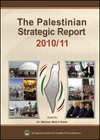 signed in Cairo last May still needs more serious steps to end the division and achieve real reconciliation on the ground. It needs to resolve many obstacles through cooperation between the different parties, away from external interventions and pressures.
signed in Cairo last May still needs more serious steps to end the division and achieve real reconciliation on the ground. It needs to resolve many obstacles through cooperation between the different parties, away from external interventions and pressures.
On the Israeli level, the Report mentions that 2010 has continuously witnessed the inclination of the Israeli society towards the extreme right. It further notes the absence of any breakthroughs in 2011 especially in the light of Israel’s rejection for the negotiations with President Mahmud ‘Abbas. The agreement signed with Hamas and the PA’s attempts to obtain international recognition of the Palestinian State in September 2011 hindered such negotiations.
On the international level, the PSR says that the international diplomatic efforts towards the Palestinian issue have failed again in 2010. They could not achieve any significant progress regarding the peace settlement track or the siege imposed on the Gaza Strip.
Moreover, PSR 2010/11 includes a large number of figures and statistics on Israeli violations on different levels. During 2010, 98 Palestinians were killed in the West Bank and Gaza Strip (including Jerusalem) by Israeli forces and settlers while 967 Palestinians and international solidarity activists were wounded. On the other hand, Israel’s internal security service mentioned that during 2010, 9 Israelis were killed and 28 were wounded in operations carried out by the Palestinians.
Concerning settlement building, the Report shows that despite the 10-month Israeli moratorium on settlement building, Israel established 1819 buildings/apartments in 133 settlements all over the West Bank, including Jerusalem; in addition to 1433 mobile homes (caravans).
PSR 2010/11 also discusses the increased Israeli attacks on the Islamic and Christian holy sites in Jerusalem and historic Palestine, during 2010. It further shows that the developments during that year revealed that the Judaization of Jerusalem has become the primary battle for Israel due to the obsession with the “Jewishness of the state” dominating the Israeli mind.
Concerning demographic indicators, PSR 2010/11 mentions that at the end of 2010 the number of Palestinians around the world was around 11.14 million people. More than half of them, i.e., 5.75 million (51.6%) live in Diaspora, while the rest, i.e., 5.39 million (48.4%) live in historic Palestine. The latter are distributed by 1.28 million people in the territories occupied in 1948 and 4.11 million in the ’67 territories.
The Report mentions that if the current growth rates of the Palestinians and the Jews persist, the number of Palestinians and Jews will become on par by 2017 where each will reach around 6.53 million. Thus, in 2020, around 49.2% of the population will be Jews as their number will reach 6.87 million compared to 7.09 million Palestinians.
Regarding the economic indicators in the West Bank and the Gaza Strip, the Report shows that events during 2010 has not affected the direct dependence of the Palestinian economy on the Israeli economy. In addition, the isolation of the Palestinian economy from the outside world continued due to the Israeli control of all international exits and Palestinian border crossings besides the Palestinian foreign trade.
PSR 2010/11 also refers to the enormous difference between the Palestinian economy in the West Bank and the Gaza Strip on one hand and the Israeli economy on the other. Thus, it shows, for example, that in 2010 the Palestinian GDP per capita was $1500 (around $1925 in the West Bank and $877 in the Strip) compared to $28,500 in Israel. In addition, the GDP amounted to $5.73 billion for the Palestinians compared to $217.13 billion for the Israelis.



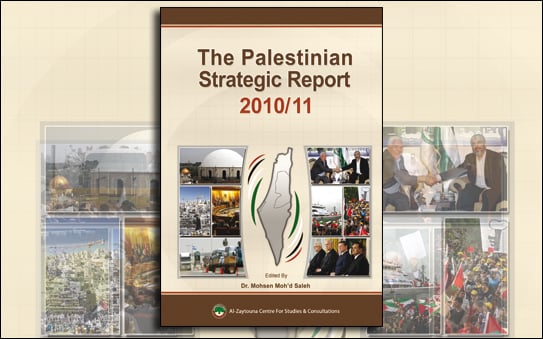

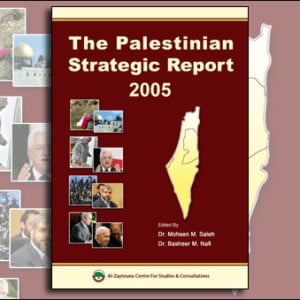
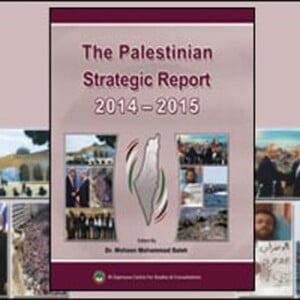
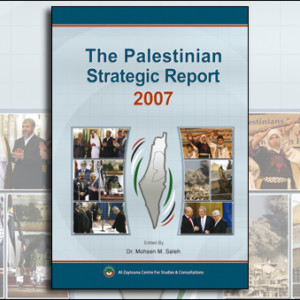
Reviews
There are no reviews yet.